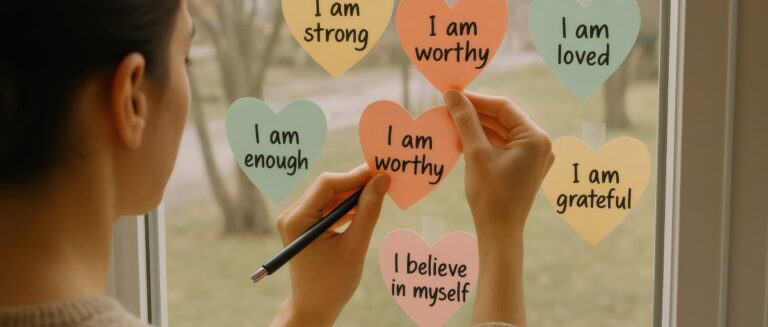When was the last time you had a good, long cry? If you’re like most people, you probably shed a few tears within the past month. Adult women cry around 4-5 times a month, while adult men cry around 0-1 times a month.
While shedding tears is a universal human experience, you might be surprised to learn that not all tears are the same. Humans produce three distinct types: basal tears that lubricate the eyes, reflex tears that form in response to irritants, and emotional tears triggered by solid feelings like sadness, grief, joy, and relief.
When people cry, their tears may contain additional proteins and hormones not found in other tears, serving an essential evolutionary purpose by helping signal distress and elicit support from others.
The next time you ask why do we cry when we are sad, remember shedding tears releases endorphins and oxytocin that soothe emotional and physical pain, making it beneficial for your well-being.
The Three Types of Tears: What Are They and What Do They Do?
Your eyes produce three types of tears daily, each with its unique formula and function. Think of these tears like the maintenance crew for your eyes, working together to keep things running smoothly. Here’s a breakdown of the three types and what they do.
- Basal Tears: The Invisible Lubricators
These tears constantly lubricate and keep your eyes moist. Whenever you blink, they coat your eyes with a thin film to protect them and help you see clearly. They also contain special enzymes that fight off bacteria and keep your eyes healthy. Even when you’re not actively crying, your basal tears are hard at work behind the scenes, keeping your eyes in good shape.
- Reflex Tears: The Emergency Response Team
When irritants like onions or dust enter our eyes, reflex tears are produced to protect the eyes by flushing out foreign particles and safeguarding delicate eye tissues. They come in larger quantities than regular tears to ensure thorough cleansing and protection.
- Emotional Tears: The Release Valve for Your Feelings
Finally, we have emotional tears, most often associated with crying. These tears flow when you feel strong emotions like:
- Sadness
- Grief
- Anxiety
- Frustration
- Joy
- Relief
Interestingly, emotional tears have a chemical composition different from basal or reflex tears. They contain higher levels of certain hormones and proteins, which scientists believe may serve a communication function.
The Science Behind Why We Cry When We Are Sad
We know that emotional tears are chemically distinct from the other two types—but why do we shed them, especially in response to sadness? What purpose could this strange behavior possibly serve?
Scientists have a few theories. One of the leading evolutionary theories proposed by Dutch psychologist Ad Vingerhoets is that crying developed as a kind of distress signal to elicit help from others. Like how babies cry to meet their needs, adult tears may have evolved to communicate helplessness and vulnerability.
In a study, participants rated crying faces as expressing a greater need for support and comfort compared to non-crying sad faces.t. As Vingerhoets puts it in his book Why Only Humans Weep, tears are “a signal that others can see.”
The Unique Chemistry of Emotional Tears
The unique chemical composition of emotional tears contains additional substances, including enzymes, lipids, metabolites, and electrolytes, in addition to the usual components found in all tears.
- Prolactin: a hormone associated with bonding
- Adrenocorticotropic hormone (ACTH): a stress hormone
- Leu-enkephalin: a natural painkiller
- Manganese: an essential mineral
The presence of these substances has led some researchers to theorize that emotional tears may serve a biochemical function, potentially sending distress signals to others on a subconscious level. However, more research is needed in this area to say conclusively.
The Gender Gap in Crying
Of course, not everyone cries with the same frequency – and one of the most striking differences is between genders. Studies consistently show that women cry significantly more often than men, shedding tears 4-5 times more frequently on average.
Researchers believe that this disparity exists due to both biological and cultural reasons. On a physiological level, women have higher levels of the hormone prolactin, which is assumed to lower the threshold for crying. Conversely, men have higher levels of testosterone, which may inhibit crying.
However, societal norms also likely play a role. In many cultures, crying is a sign of weakness, particularly for men. From a young age, boys are often discouraged from crying and told to “man up,” while it’s more acceptable for girls to express emotions openly. This learned behavior can carry over into adulthood.
Why Crying is Good for You
Crying isn’t just an emotional release; it has measurable physiological effects on the mind and body. It can release feel-good chemicals, such as endorphins and oxytocin, and help regulate your nervous system by activating your body’s relaxation response. This can have a positive impact on mental health.
Some researchers even believe crying may serve a detoxifying function. One theory is that shedding tears helps expel excess stress hormones and other toxins in the body. While more research is needed to confirm this, it’s an intriguing possibility.
How Tears Connect Us
Crying is a universal language that communicates pain without words. Shedding tears together bonds us during communal grieving, making us feel less alone. Tears can also be a powerful tool for creating empathy and connection in our relationships. Researcher Brené Brown has found that vulnerability is the key to forming deep, authentic connections with others. When we allow others to see us in a moment of weakness or pain, we invite them to respond with compassion and care.
Crying can even help resolve conflicts in romantic relationships. A study found that people perceive their partners as more trustworthy and reliable when they cry during an argument.
The tears indicate that the person is genuinely invested and not just putting on an act. Crying in front of others may feel uncomfortable, but it’s a natural way of saying, ‘I’m hurting, and I need support.’ Being vulnerable is brave and fosters intimacy and understanding in relationships.
Embracing the Power of a Good Cry
Crying is a powerful and universal human experience that serves multiple purposes, from relieving stress to communicating our needs to others. It’s important to remember that crying is a sign of strength, not weakness, and an act of emotional honesty that requires courage and vulnerability.
Is crying good for you? Yes, it is. The next time you feel the urge to cry, don’t hold back—let those tears flow. Crying isn’t a weakness; it’s a natural and healthy response to life’s challenges, and it is good for your mind and body.
Sources
National Center for Biotechnology Information. (2018). Tears as an honest signal of trustworthiness. NCBI. https://pmc.ncbi.nlm.nih.gov/articles/PMC6201288/#R3
American Academy of Ophthalmology. (2023). Facts about tears. AAO. https://www.aao.org/eye-health/tips-prevention/facts-about-tears
Frontiers in Psychology. (2014). The social significance of crying. Frontiers in Psychology. https://www.frontiersin.org/journals/psychology/articles/10.3389/fpsyg.2014.00502/full
National Library of Medicine. (2009). Emotional responses and tears. PubMed. https://pubmed.ncbi.nlm.nih.gov/19568753/
Vingerhoets, A. (n.d.). Research. Ad Vingerhoets. https://www.advingerhoets.com/research
Vingerhoets, A. (n.d.). Why only humans weep: Unraveling the mysteries of tears. Ad Vingerhoets. https://www.advingerhoets.com/books/why-only-humans-weep-unravelling-the-mysteries-of-tears
American Psychological Association. (2014). The power of crying. APA. https://www.apa.org/monitor/2014/02/cry
Cleveland Clinic. (n.d.). Adrenocorticotropic hormone (ACTH). Cleveland Clinic. https://my.clevelandclinic.org/health/articles/23151-adrenocorticotropic-hormone-acth
National Center for Biotechnology Information. (2018). Tears as an honest signal of trustworthiness. NCBI. https://pmc.ncbi.nlm.nih.gov/articles/PMC6201288/
ResearchGate. (2019). Emotional tears: An honest signal of trustworthiness, increasing prosocial behavior. ResearchGate. https://www.researchgate.net/publication/335446082_Emotional_Tears_An_Honest_Signal_of_Trustworthiness_Increasing_Prosocial_Behavior
University of Minnesota.(n.d.).Daring to be vulnerable: Brené Brown. Taking Charge. https://www.takingcharge.csh.umn.edu/daring-be-vulnerable-brene-brown











